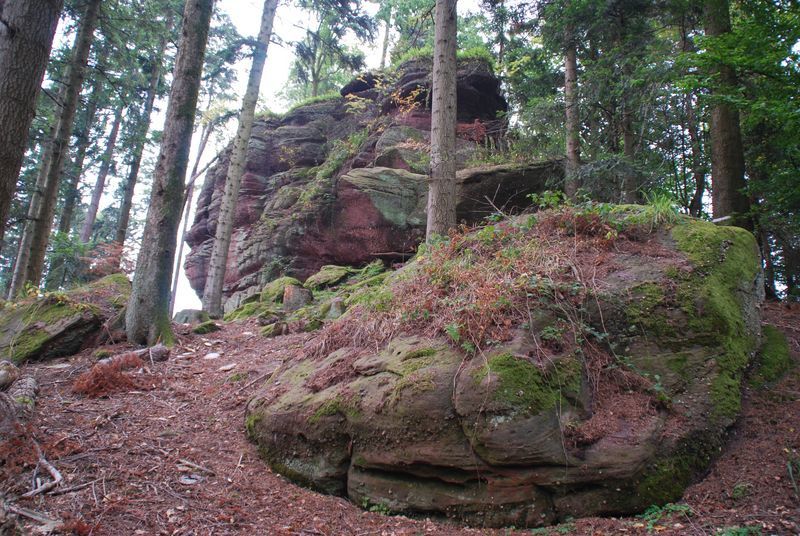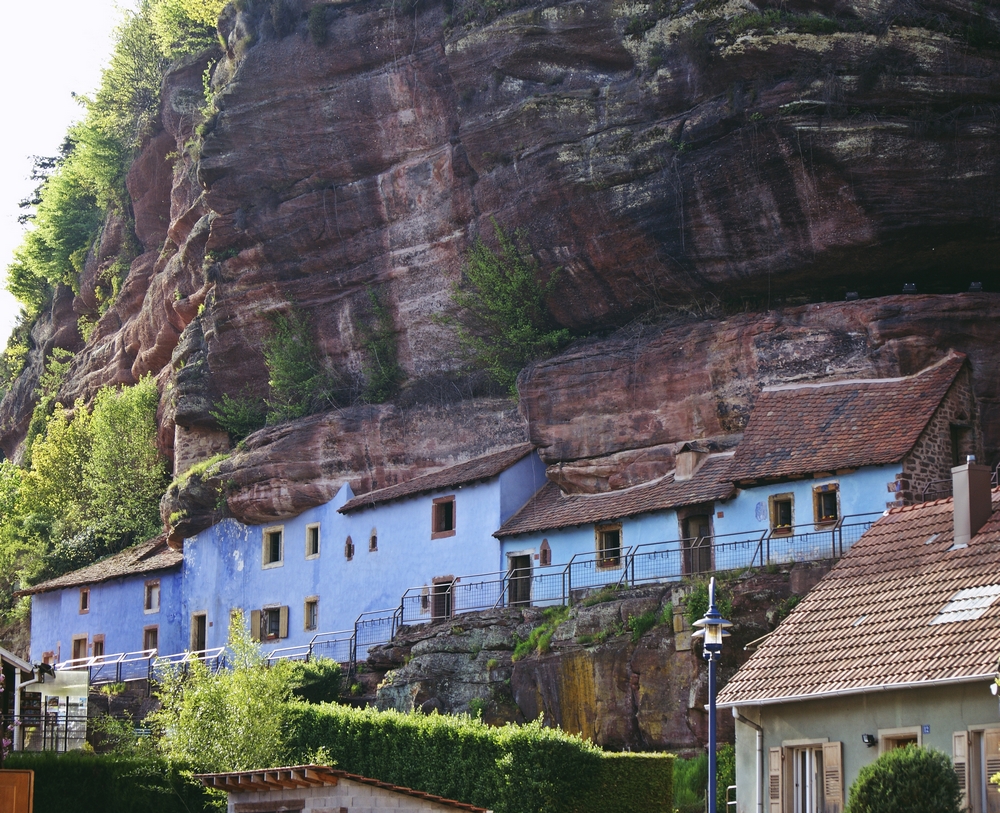|
Introduction :
Connaissez-vous le grès du Buntsandstein, autrement appelé grès bigarré ou trias inférieur? Ce grès, là où il affleure, produit par érosion des rochers isolés de taille et de formes souvent spectaculaires (plusieurs dizaines de mètres de hauteur) comme, par exemple, le rocher de Dabo et le site de l'Altschlossfelsen.
Le grès bigarré :
Le terme grès bigarré ne désigne pas vraiment un type de roche (un grès de différentes teintes), mais une formation géologique, épaisse souvent de plusieurs centaines de mètres, qui comporte surtout du grès. C'est pourquoi on parlait autrefois souvent de « grès du Buntsandstein » (et, pour l'étage suivant, de calcaire coquillier ou Muschelkalk) pour désigner la formation géologique du Trias inférieur.

Dans les Vosges, le Triassique offre avec celui de Franconie quelques différences importantes. A la base du grès bigarré, on rencontre le grès des Vosges; de plus, les gisements salifères sont intercalés dans le Keuper au lieu d'être concentrés dans le Muschelkalk. On divise le grès vosgien en deux parties : le grès des Vosges et le grès bigarré proprement dit. Le grès des Vosges est un grès grossier formé de grains de quartz, cimentés par du protoxyde de fer : les poudingues abondent dans ces couches sous des épaisseurs de 300 à 500 mètres. Le grès bigarré, ou à Voltzia, se compose surtout de marnes bariolées et de grès micacés.

L'homme a utilisé ce grès pour y creuser des habitats troglodytes (Dabo, Graufthal), pour a construction des édifices de prestige (par ex. les églises, châteaux et ponts). Les cathédrales de Fribourg et de Strasbourg, par exemple.

La rocher de Dabo :
Le célèbre Rocher de Dabo est un site exceptionnel qui se dresse fièrement au coeur du massif vosgien. Du haut de ses 664 m, il offre un panorama remarquable tant sur le plateau lorrain que sur la ligne bleue des Vosges dont les sommets sont tapissés d’immenses forêts de résineux et de hêtres.
Formé il y a plus de 200 millions d’années, le « Rocher » est un bloc de grès rose mesurant 30 m de haut, 80 m de long et 26 m de large. Il domine le village de Dabo. Au cours de l’histoire, il a suscité bien des convoitises. La légende dit qu’un premier château a été édifié sur le site sous Dagobert II.
En 1822, avec la construction d’une chapelle à la mémoire du pape Saint Léon IX, le Rocher connut une nouvelle vocation. Il devint un lieu de pèlerinage en souvenir de cet enfant du pays. Bruno de Dabo, né en 1002, fut évêque de Toul avant d’être élu pape en 1048 à l’âge de 46 ans. Le soir, la vue sur la chapelle illuminée est un enchantement de magie et de mystère.

Rappel concernant les « Earthcaches »: Il n'y a pas de conteneur à rechercher ni de logbook à renseigner. Il suffit de se rendre sur les lieux et d'exécuter les requêtes du propriétaire de la cache avec l'envoi des réponses par mail pour validation. Bon Earthcaching!
Pour valider votre visite:
1. Quelle sont les autres noms du grès du Buntsandstein? De quelle période date t'il?
2. Aux coordonnées, combien de mètres vous séparent du clocher de la chapelle?
3. Dans quel type de construction retrouve t'on ce genre de grès?
Une photo de vous devant le rocher de Dabo serait la bienvenue mais n'est pas obligatoire!
Loguez cette cache "Found it" et envoyez-moi vos propositions de réponses soit via mon profil, soit via la messagerie geocaching.com (Message Center), et je vous contacterai en cas de problème.
|